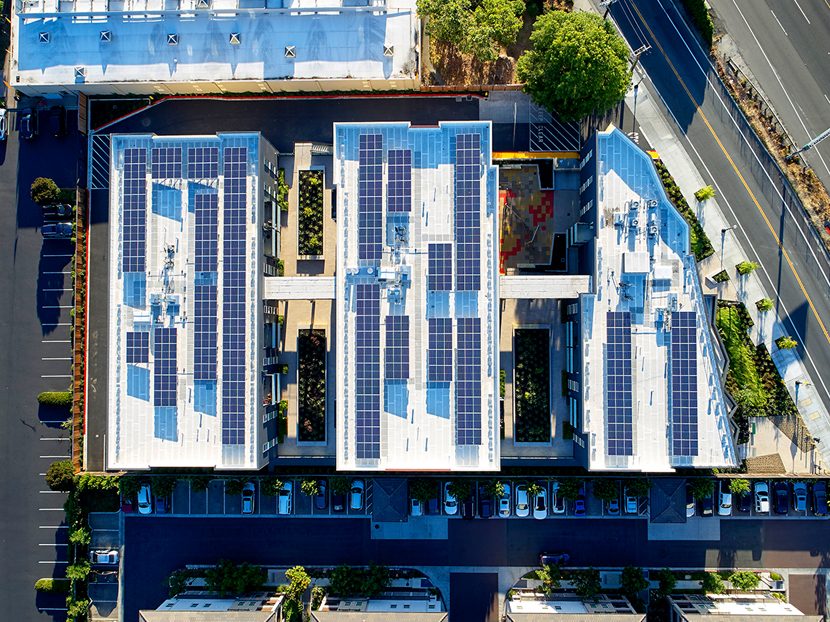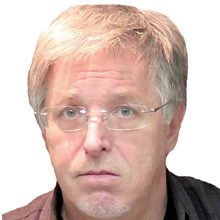Let’s Build Back Better
With space heating becoming more standardized and with loads becoming smaller, domestic hot water is a new focus for innovation.

After a 2020 that most people want to forget, hopeful humans can start to think about 2021 and, perhaps, the rebuilding of a better world. For construction, plumbing and heating engineers, there will be no shortage of new technological directions available to help us do things differently. Almost all will help make our air and water cleaner. They will often be supported by government regulations and incentives, especially at the city and state levels.
Some of the best developments in water heating during the 2010s involved heat pump water heaters, which were still mostly under the radar this year. But these systems might soon take off; sales are up and they offer advantages.
Among those working on low-load, low-carbon buildings for many years, a new reality is emerging. Mechanical engineers and consultants learned that tackling space heating by improving the building envelope and installing heat pumps and energy recovery ventilators is becoming common, with fewer challenges. What was previously seen as innovative or experimental has become a lesson learned or a best practice or something in between.
Among early adopters, a new low-energy building model is becoming more standardized in its component parts. In addition, the various green building certifications are heading in many of the same directions. This is good news because as climate change worsens, we think about an aggressive ramp-up of green building efforts for new and retrofit projects.
With space heating becoming more standardized and with loads becoming smaller, domestic hot water is a new focus for innovation. It is also proportionately more significant within total maximum building energy limits; the required temperatures are higher.
C02 for California Multiunit
I recently spoke with a few people from DB Architects, a company that has worked on LEED buildings for many years; more recently, it has evolved toward Passive House scenarios.
One of its projects is the Edwina Benner Plaza, a 66-unit, 110,000-square-foot, four-story affordable housing project in Sunnyvale, Calif. It includes a mix of one-, two- and three-bedroom units, with daycare and a computer center. It is one of the first all-electric buildings in the area, with mini-splits in each unit, including condensers on the balconies.
For hot water, the architects selected the SanCO2 from Sanden (now ECO2 Systems in the United States). As the name implies, this system moves beyond R410-A and uses C02 as a refrigerant; it reduces global warming potential from 2,088 to 1.
“That was the first time we installed the centralized system and it’s working really well,” says DB Architects founder David Baker. “I think testing and measuring is very important for the success of these projects, and at that one, they are doing a lot of testing.”
They installed two of the larger SanCO2 units (with an 83-gallon tank). Each one consists of two parts: the outdoor unit, where the hot water is produced by extracting heat from the ambient air, and the tank installed inside, within 50 feet. Installation is simple, with two pipes connecting the tank to the outdoor heat pump.
The SanCO2 uses an inverter-type compressor, DC fan motor and pump; the design minimizes energy consumption, maximizes capacity and fast recovery. The result is operating costs four times lower than electric-resistance storage water heaters and a little better than conventional heat pump water heaters, partly because it does not scavenge heat indoors.
It operates quietly with a delivered hot water temperature range from -20 F up to 175 F, with no need for a backup electric element in the storage tank. The stainless-steel tank has a 15-year warranty.
The Edwina Benner Plaza, named after Sunnyvale’s first female mayor, includes a 114-kilowatt photovoltaic solar array on its roofs and electric vehicle chargers in the garage. The developer says there were no significant construction cost differences when building an all-electric property compared with a traditional property. And as a bonus, the California Energy Commission provided some grant incentives.
Each unit includes an energy education monitor, a device that provides real-time feedback on energy usage. “Traditionally, these devices save 5 percent just by making residents aware of their usage,” says Katie Ackerly, sustainability lead at DB Architects. “In some instances, if an education campaign accompanies them, they have saved even more.”
She adds that the group also monitored water heat for the first year, with access to the utility data. “The building has incredibly low energy-use intensity even without the solar, Ackerly notes. “It was below 20 KBTU per square foot; with the solar, it went down to about 8 KBTU.”
ERVs and Heat Pumps
If you head north from Sunnyvale to Canada, you will eventually come to a cooler place called Pemberton, British Columbia. It’s in climate zone 6, which means 3,000 to 3,999 heating degree days. There you will find a three-story, 45-unit condominium building called Orion.
It is expected to meet Step 4, the highest level of the BC Energy Step Code while maintaining the construction cost below the market rate. Step 4 is roughly equivalent to the Passive House construction standard.
Space conditioning at the 51,962-square-foot Orion is provided by a centralized heating, ventilation and air conditioning system, which includes a Swegon Gold RX-35 energy recovery ventilator unit with 86 percent efficiency. The ERV is connected to two Mitsubishi air-source heat pumps with variable refrigerant flow. The heat pumps allow the ERV to double its ventilation capacity and provide additional heating and cooling for peak demand.
The ERV includes a bypass mode to flush the heat out and help cool the building in summers when the exterior temperature is lower than the inside temperature, such as at night time. The building also has supplemental baseboard heating and individual thermostat controls in each unit.
A real-time data monitoring system controls the HVAC equipment, allowing the building manager to optimize the central heat pump and ERV systems' performance. It minimizes the need for less-efficient backup baseboard heaters.
Energy-efficient appliances with minimal need for venting are used to save energy and minimize envelope perforations that compromise airtightness. For example, ductless dryers condense extracted moisture and discharge it down the drain, avoiding the need for exterior dryer vents in each unit. The kitchen hoods include recirculating fans that clean the exhaust air and release it back into the units. The ERVs have exhaust vents in the kitchens near the ranges.
Sanden air-to-water heat pump units are at work here as well, heating water in storage tanks by transferring heat from the outside air. Single-pass CO2 heat-pump DHW systems are most efficient when receiving the coldest water possible directly from the municipal supply. The Orion project's original design mixed the cold municipal water with the hot water produced by the heat pumps and the recirculated water from the building in the storage tank.
This was addressed by adding separate “swing tanks” to store the hot water from the heat pumps to supply to the building. The recirculated water was re-directed into the swing tanks. An electric boiler was added to provide supplemental heating when the water temperature from the heat pumps drops below 120 F.
Low-carbon building veteran Monte Paulsen of RDH Building Science says North America needs more options, such as larger C02 heat pump water heaters. He notes that Asian manufacturers make them but don’t market them here.
Paulsen believes we will experience a high level of innovation in mechanical equipment in the next decade, “more than we've seen in the last 50 years.”
He says the architectural design reduced thermal bridges at the Orion and included insulated concrete forms and efficient LED lighting.
Revisiting Philadelphia
Earlier this year, I wrote about Tim McDonald’s Front Flats, a 28-unit residential and office building in the Kensington-Fishtown area of Philadelphia. It bears repeating in case you missed it because of the heat pump water heater context.
In this case, they ended up using the Rheem R410-A units and, with help from hot water expert Gary Klein, managed to significantly improve efficiencies. McDonald had been worried about losses during distribution, so they located pairs of heat pump water heaters in three locations, directly below the kitchens. It allowed them to reduce piping by 50 percent, pipe insulation by 50 percent and heat losses by 50 percent.
Klein then saved another 50 percent with a relatively innovative trick that employed the Viega pipe-in-pipe system for recirculation. The furthest fixture from the heat source was about five floors up, with residents expecting near-instantaneous hot water.
Viega makes a fitting that caps the supply line and allows a PVC pipe to fit inside the supply line so that when the water gets to the top of the riser, it goes directly into the recirculation line. Yes, this means the supply line is actually insulating the recirculation line.
Adversity Is the Mother of Intention
Although governments will continue to demand energy efficiencies, other events from the year we want to forget are helping to accelerate a move into tighter, low-load homes. The COVID-19 pandemic has meant we are all more likely to be confined at home or in other unexpected locations, which has heightened our curiosity about our indoor air's health. Because new buildings tend to use ERVs, they help alleviate this concern by providing 100 percent fresh air.
Architect David Baker says one of his clients built a project in Chicago and resisted Baker’s suggestion that it be LEED-certified. The next time he worked with the same client, they suggested to him that they seek LEED Gold or Platinum because it now results in faster permitting.
Part three of the story was that the client’s California project was near some of the raging fires during the year from hell. “Now the builder is advertising: ‘Come and live here, we have HEPA filters in all the units to keep the air cleaner,’” he notes.
We may prefer to forget some of the events of 2020, but with clean, efficient heat pump water heaters and some other improved building practices, maybe we can start to build back better and rediscover hope for the future and positive aspirations for 2021. Happy New Year!





